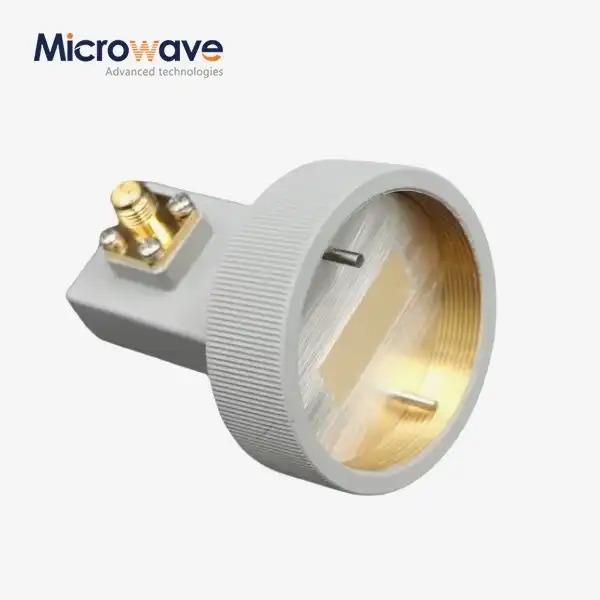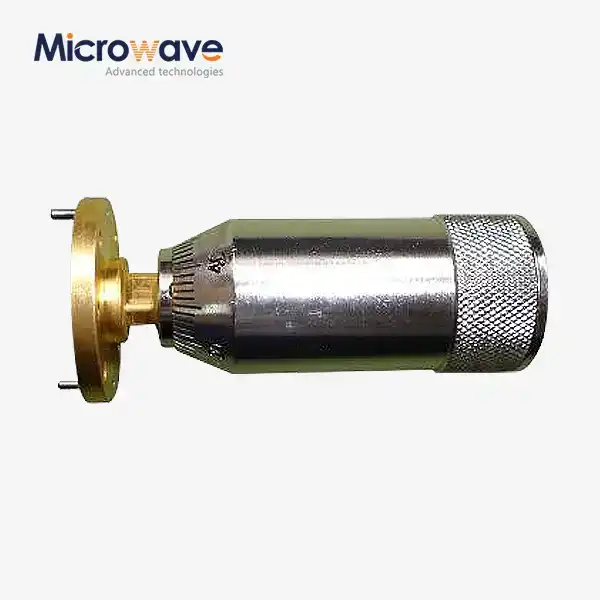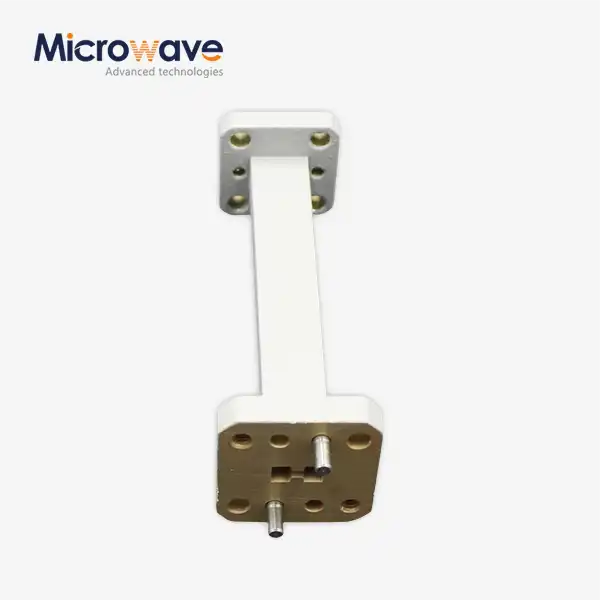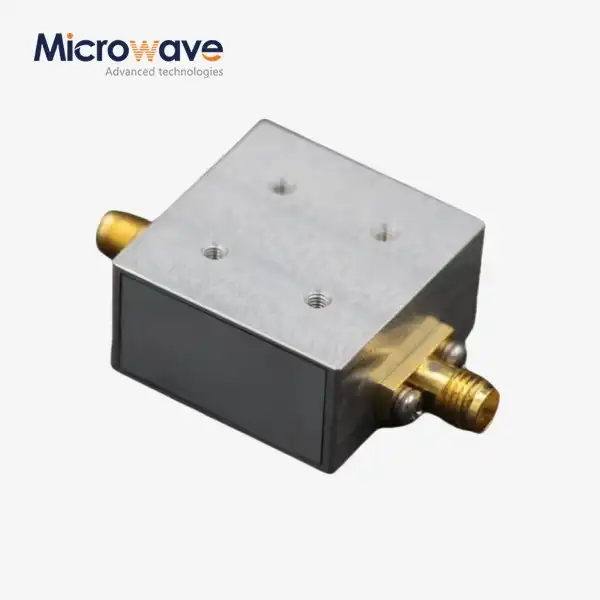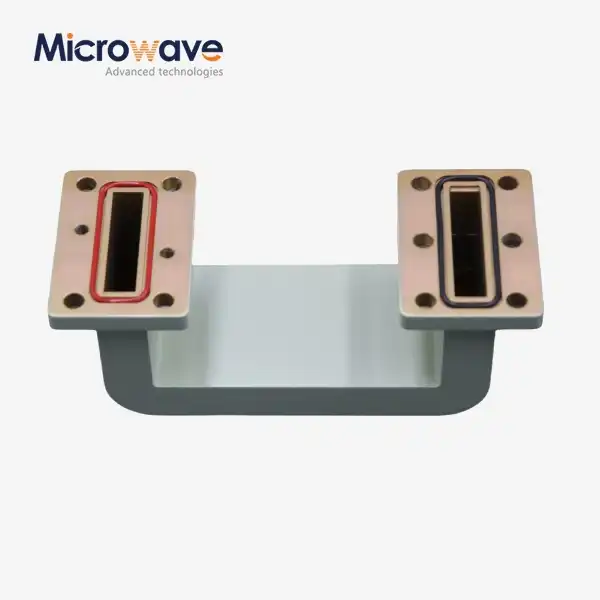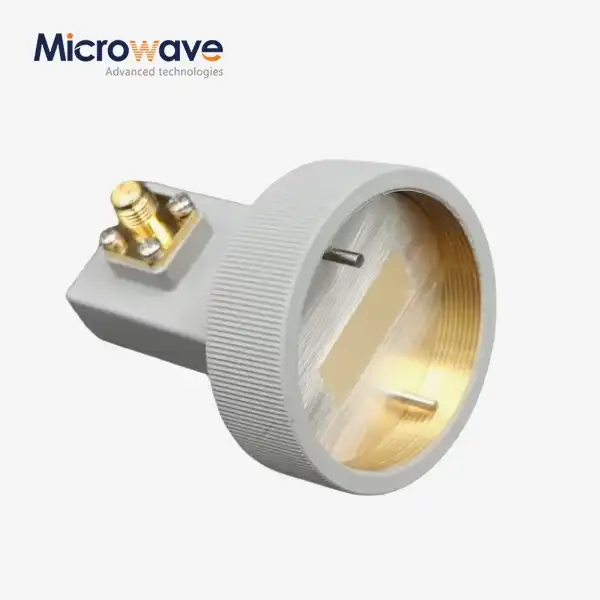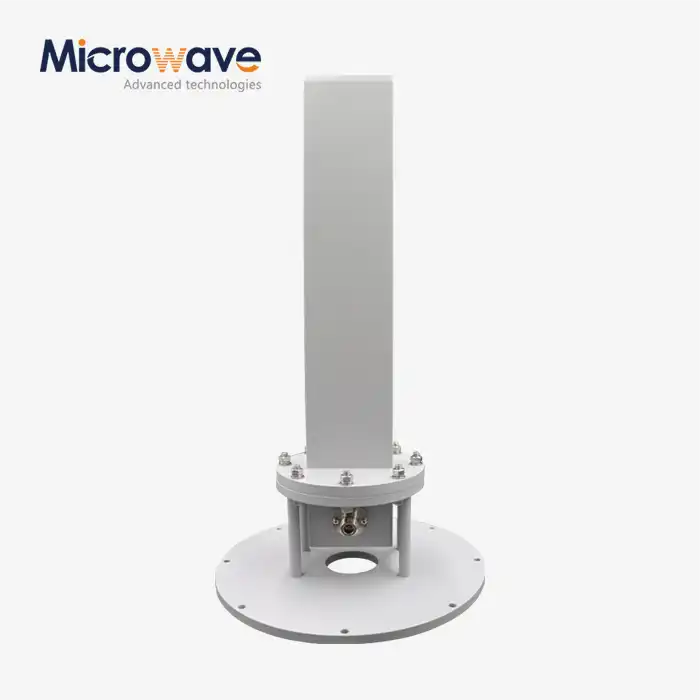5 Key Benefits of Flexible Twistable Waveguide Technology
In the rapidly evolving landscape of microwave communications, engineers frequently encounter critical challenges: rigid waveguide systems that create installation nightmares, signal integrity issues in complex layouts, and space constraints that compromise system performance. These pain points have driven countless projects over budget and behind schedule, particularly in aerospace, defense, and satellite communication applications where precision and reliability are non-negotiable. Flexible Twistable Waveguide technology emerges as the definitive solution, offering unprecedented adaptability while maintaining superior electrical performance. This comprehensive analysis reveals five transformative benefits that position Flexible Twistable Waveguide systems as essential components for next-generation microwave infrastructure, addressing the most pressing challenges faced by modern RF engineers and system integrators.
Superior Space Optimization and System Integration Capabilities
Maximizing Limited Installation Space
The architectural demands of modern microwave systems have intensified dramatically as equipment becomes more compact while functionality requirements expand exponentially. Flexible Twistable Waveguide technology revolutionizes space utilization by providing engineers with unprecedented freedom to route signal paths through the most challenging geometries. Unlike rigid waveguide systems that demand precise pre-installation measurements and often require costly modifications to accommodate unexpected obstacles, Flexible Twistable Waveguide components adapt seamlessly to existing infrastructure constraints. These precision-engineered transmission lines can navigate around structural elements, bend through tight corners, and twist to align with mismatched connection points, effectively reducing the overall system footprint by up to forty percent in complex installations. Advanced Microwave Technologies' rectangular twistable waveguides exemplify this optimization capability through their innovative design featuring Neoprene jacket construction that maintains structural integrity while providing exceptional flexibility. The ability to customize lengths according to specific project requirements eliminates the waste associated with standard-length rigid sections, while the bending and twisting capabilities ensure that every cubic centimeter of available space can be utilized effectively. This optimization becomes particularly critical in satellite ground stations, aircraft installations, and shipboard systems where space premiums can dramatically impact overall system costs and operational efficiency.
Enhanced System Layout Flexibility
Modern microwave system architectures demand unprecedented flexibility to accommodate evolving technology requirements and operational modifications throughout their service life. Flexible Twistable Waveguide technology provides system designers with the adaptability needed to implement complex routing configurations that would be impossible or prohibitively expensive using traditional rigid waveguide approaches. These flexible components enable engineers to create serpentine paths, accommodate thermal expansion zones, and provide vibration isolation points that enhance overall system reliability while simplifying maintenance access requirements. The engineering implications extend far beyond simple space savings, as Flexible Twistable Waveguide systems enable modular design approaches that facilitate future upgrades and reconfigurations. System integrators can implement initial installations with confidence, knowing that subsequent modifications can be accommodated without complete waveguide replacement. This flexibility proves invaluable in applications such as radar systems, where antenna positioning requirements may evolve, or in telecommunications infrastructure where capacity expansion drives ongoing modifications to RF distribution networks.
Exceptional Signal Integrity and Low-Loss Performance
Advanced Material Engineering for Minimal Attenuation
Signal integrity represents the fundamental performance criterion for any microwave transmission system, and Flexible Twistable Waveguide technology delivers exceptional results through advanced material selection and precision manufacturing techniques. Premium-grade materials utilized in construction minimize signal attenuation even when components are subjected to complex bending and twisting configurations. The helically wound brass construction with silver plating, standard in high-performance flexible waveguide designs, ensures consistent electrical characteristics across the entire frequency range while maintaining mechanical durability under dynamic stress conditions. Advanced Microwave Technologies' commitment to signal integrity extends through their comprehensive frequency coverage from 0.5 to 110 GHz, accommodating everything from legacy communication systems to cutting-edge millimeter-wave applications. The precision engineering employed in manufacturing processes guarantees accurate dimensions and consistent electrical performance, ensuring that Flexible Twistable Waveguide systems meet or exceed rigid waveguide performance specifications. Low-loss material properties become particularly critical in long transmission runs or applications involving multiple bends, where cumulative losses could significantly impact overall system performance.
Consistent Performance Under Mechanical Stress
The ability to maintain electrical performance while subjected to mechanical deformation distinguishes Flexible Twistable Waveguide technology from alternative transmission line solutions. These components are specifically engineered to preserve characteristic impedance, minimize reflection coefficients, and maintain consistent attenuation characteristics throughout their operational flexibility range. Advanced manufacturing techniques ensure that bending and twisting operations do not introduce unacceptable variations in electrical parameters, enabling system designers to implement complex routing configurations without compromising signal quality. The mechanical stress tolerance of Flexible Twistable Waveguide systems proves essential in applications subjected to vibration, thermal cycling, or periodic repositioning requirements. Satellite communication systems, mobile radar installations, and aerospace applications particularly benefit from this capability, as traditional rigid waveguide connections would require complex expansion joints or risk mechanical failure under operational stress conditions. The integrated flexibility eliminates the need for multiple rigid sections connected through rotary joints or flexible adapters, reducing system complexity while improving overall reliability.
Enhanced Durability and Environmental Resistance
Construction Excellence for Harsh Operating Environments
Environmental durability requirements in modern microwave applications have escalated significantly as systems deploy in increasingly challenging conditions ranging from arctic installations to desert environments, marine applications, and high-altitude aerospace platforms. Flexible Twistable Waveguide technology addresses these challenges through robust construction techniques that provide superior resistance to corrosion, temperature extremes, mechanical shock, and vibration loads. The protective jacketing materials, including Neoprene in standard configurations, provide moisture barriers while maintaining mechanical flexibility throughout extended operational periods. Advanced Microwave Technologies' manufacturing processes incorporate corrosion-resistant coatings and materials that ensure component longevity even in saltwater environments or industrial atmospheres containing corrosive compounds. The ability to specify alternative materials such as aluminum, copper, or brass construction enables optimization for specific environmental conditions while maintaining electrical performance requirements. This material flexibility allows system integrators to balance performance, durability, and cost considerations according to specific application requirements, ensuring optimal value throughout the operational life cycle.
Vibration Isolation and Mechanical Protection
The mechanical properties of Flexible Twistable Waveguide systems provide inherent vibration isolation that protects sensitive microwave components from external shock and vibrational loads. This characteristic proves particularly valuable in mobile applications, shipboard installations, and aerospace systems where mechanical disturbances could otherwise compromise system performance or cause premature component failure. The flexible construction absorbs mechanical energy that would otherwise be transmitted through rigid waveguide connections to sensitive equipment such as transceivers, amplifiers, or measurement instruments. Extended operational life expectations in demanding applications require waveguide systems capable of withstanding repeated flexing cycles without degradation in electrical or mechanical performance. Advanced manufacturing techniques ensure that Flexible Twistable Waveguide components maintain their specified performance characteristics throughout millions of operational cycles, providing system integrators with confidence in long-term reliability. This durability becomes essential in applications such as satellite tracking systems, radar installations, and communication systems where maintenance accessibility may be severely limited.

Comprehensive Customization and Application Versatility
Tailored Solutions for Specific Application Requirements
The diversity of modern microwave applications demands transmission line solutions that can be precisely tailored to meet specific electrical, mechanical, and environmental requirements. Flexible Twistable Waveguide technology excels in this regard through comprehensive customization capabilities that address unique application challenges. Advanced Microwave Technologies' OEM services encompass custom dimensions, material selection, frequency optimization, and specialized connector configurations that ensure optimal performance in specific operational environments. Custom dimension capabilities extend beyond simple length adjustments to include diameter specifications, wall thickness optimization, and flange configurations that match existing system interfaces. This customization eliminates the compromises often associated with standard component selections, enabling system designers to achieve optimal performance while minimizing costs and implementation complexity. The ability to specify exact electrical characteristics for particular frequency ranges ensures that Flexible Twistable Waveguide systems deliver maximum efficiency in their intended applications.
Wide-Spectrum Frequency Coverage and Global Compatibility
Modern communication systems operate across increasingly broad frequency spectra, from traditional microwave bands through millimeter-wave frequencies required for advanced applications such as 5G infrastructure and automotive radar systems. Flexible Twistable Waveguide technology provides exceptional bandwidth coverage, typically spanning from L-band through Ka-band applications, enabling single-component solutions for multi-frequency system implementations. This broad frequency coverage eliminates the need for multiple specialized transmission line types while ensuring consistent performance across the entire operational spectrum. Global compatibility requirements demand transmission line solutions that meet international standards while providing the flexibility needed for diverse installation environments and regulatory requirements. Advanced Microwave Technologies' ISO certification and RoHS compliance ensure that Flexible Twistable Waveguide systems meet stringent international quality and environmental standards. This certification provides system integrators with confidence in component reliability while facilitating international deployments and export applications.
Advanced Manufacturing Quality and Technical Support Excellence
Precision Manufacturing and Quality Assurance
The performance expectations for microwave transmission systems in critical applications demand manufacturing processes that deliver consistent quality and reliability. Flexible Twistable Waveguide production requires sophisticated manufacturing techniques that ensure precise dimensional control while maintaining the mechanical flexibility that defines these components. Advanced Microwave Technologies' manufacturing capabilities incorporate advanced quality control procedures that verify electrical performance, mechanical integrity, and environmental compliance throughout the production process. ISO 9001:2015 certification demonstrates the commitment to quality management systems that ensure consistent performance across all product lines. The precision engineering employed in Flexible Twistable Waveguide manufacturing guarantees accurate dimensions and reliable electrical characteristics that meet or exceed specifications. This quality assurance becomes particularly critical in applications where component failure could result in mission-critical system outages or safety concerns.
Comprehensive Technical Support and Engineering Services
The complexity of modern microwave system implementations often requires specialized technical expertise that extends beyond basic component selection and installation. Advanced Microwave Technologies provides comprehensive technical support services that encompass installation guidance, troubleshooting assistance, and engineering consultation throughout project lifecycles. This support capability proves invaluable for system integrators implementing Flexible Twistable Waveguide technology in challenging applications or innovative system architectures. Engineering services include prototype development for custom applications, allowing system designers to validate performance characteristics before committing to full-scale production. Quick turnaround capabilities on prototype development accelerate project timelines while ensuring that final implementations meet all performance requirements. The combination of manufacturing expertise and technical support creates a comprehensive resource that enables successful implementation of even the most challenging Flexible Twistable Waveguide applications.
Conclusion
Flexible Twistable Waveguide technology delivers transformative benefits that address the most pressing challenges in modern microwave system design and implementation. Through superior space optimization, exceptional signal integrity, enhanced durability, comprehensive customization, and advanced manufacturing quality, these innovative components enable system architectures that would be impossible or prohibitively expensive using traditional rigid waveguide approaches. The five key benefits outlined demonstrate why Flexible Twistable Waveguide technology has become essential for applications ranging from satellite communications through aerospace and defense systems.
Cooperate with Advanced Microwave Technologies Co., Ltd.
Partner with Advanced Microwave Technologies Co., Ltd., a leading China Flexible Twistable Waveguide manufacturer with over 20 years of expertise in microwave solutions. As a premier China Flexible Twistable Waveguide supplier, we offer competitive Flexible Twistable Waveguide prices while delivering High Quality Flexible Twistable Waveguide products. Our China Flexible Twistable Waveguide factory provides comprehensive OEM services, from prototyping to full-scale production, backed by our 24m Microwave Darkroom testing facility and ISO certifications. Whether you need standard Flexible Twistable Waveguide for sale or custom solutions, our China Flexible Twistable Waveguide wholesale capabilities ensure fast delivery and technical excellence. Contact craig@admicrowave.com for immediate support and discover why global leaders choose our proven solutions.
FAQ
Q: What frequency range do Flexible Twistable Waveguides typically support?
A: Flexible Twistable Waveguides commonly support frequencies from L-band to Ka-band, with some designs covering 0.5 to 110 GHz, making them suitable for diverse applications from traditional communications to millimeter-wave systems.
Q: How do Flexible Twistable Waveguides maintain signal integrity when bent?
A: These waveguides use precision-engineered helical construction and premium materials like silver-plated brass that preserve electrical characteristics and minimize signal loss even under complex bending and twisting configurations.
Q: Can Flexible Twistable Waveguides withstand harsh environmental conditions?
A: Yes, they feature robust construction with protective jackets, corrosion-resistant materials, and temperature-stable designs that perform reliably in extreme environments including marine, aerospace, and industrial applications.
Q: What customization options are available for Flexible Twistable Waveguides?
A: Customization includes specific lengths, diameters, flange types, material selection (aluminum, copper, brass), frequency optimization, and specialized connector configurations to meet unique application requirements.
References
1. "Microwave Transmission Line Design Principles" - David M. Pozar, IEEE Transactions on Microwave Theory and Techniques
2. "Flexible Waveguide Technology in Modern Communication Systems" - Robert J. Cameron, International Journal of RF and Microwave Computer-Aided Engineering
3. "Advanced Materials for Microwave Applications" - K.M. Luk and K.W. Leung, Proceedings of the IEEE
4. "Waveguide Component Design for Satellite Communications" - James R. Wait, IEEE Microwave Magazine





